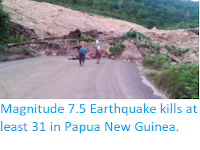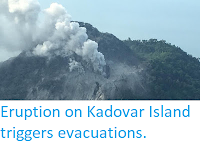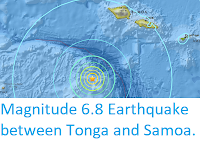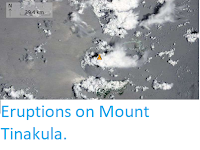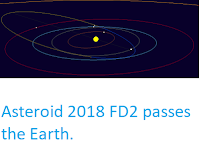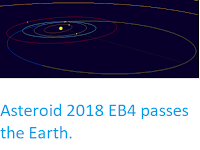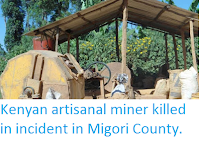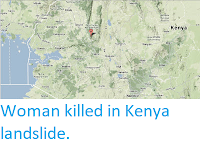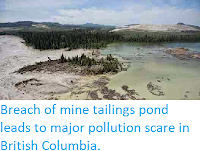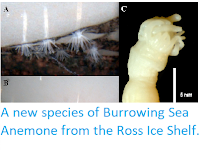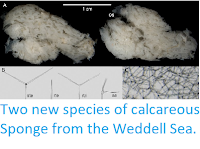The McMurdo Dry Valleys are a largely ice-free region of Antarctica
on the Ross Sea coast, discovered by Robert Scott in the early twentieth
century. The valleys contain a series of lakes, lacking surface connections and
often separated by glaciers. Mean annual air temperature on the valley floor ranges from −14.8 °C to −30.0 °C, and annual precipitation is less than 50 mm water equivalent. Most of the ground in the valleys is frozen,
though near-surface groundwater seeps and tracks are present in the upper 70 cm
of soil, which are typically extremely saline, enabling them to remain liquid
at temperatures below zero degrees centigrade. Despite the apparently inhospitable nature of this area, it is not completely lifeless, with a microbially-dominated ecosystem whose functioning is controlled by available energy from sunlight.
As in other areas, the amount of sunlight reaching the ground in the McMurdo Dry Valleys varies over time, driven by variations in the rotational and orbital cycles of the Earth, variations of the sunspot cycle and the atmospheric optical depth, i.e. the amount of light absorbed or refracted away by water vapour, cloud cover, and other aerosols in the atmosphere. In most areas on Earth, this variability is driven largely by the hydrological cycle, i.e. water entering and leaving the atmosphere, but in the cold, dry climate of the McMurdo Dry Valleys this is less likely to be an important factor.
Map of McMurdo Dry Valleys, Antarctica. Lake Hoare Station is located in Taylor Valley. Map generated in ArcGIS 10.1; Antarctica insert generated in Matlab. Obryk et al. (2018).
Obryk et al. used data from the meteorological station at Lake Hoare in Taylor Valley, which is is located 77.1 m above mean sea level and 15 km inland from the coast. The radiation sensor at Lake Hoare is located three meters above ground and receives direct and diffuse radiation for about 7 months a year. It is the longest running of eight meteorological stations record solar radiation using LiCOR radiometers, chosen for this study because of the length of data available, though where data from the other stations was available it correlated very closely with the Lake Hoare data.
In 1987 the Dry Valleys received an average annual shortwave radiation of 78 watt per square metre. This rose slightly from 1987-1990, fell sharply in 1991 then slowly rose to 103 watt per square metre in 2001, then fell again to 86 watt per square metre by 2015. This was compared to the cloud cover records from McMurdo Station (on Ross Island, about 100 km from the study site), excluding low clouds such as nimbostratus, which occur around the Antarctic coast but are not thought to extend as far inland as the McMurdo Dry Valleys (the area is also potentially affected by the Antarctic Ozone Hole, but this allows extra ultra-violet light to reach the ground, wavelengths that were not studied).
Next Obryk et al. considered the possible impact of emissions from Mount Erebus, a 3794 m volcano on Ross Island, which is continuously degassing, releasing potentially climate effecting sulphur dioxide particles, as well as Human outposts in the area, which produce a small amount to diesel fumes etc. However both of these sources are fairly constant, and even though Mount Erebus did undergo an increase in emission levels between 1984 and 1992, cannot explain the pattern of shortwave radiation variation seen in the Dry Valleys.

Next Obryk et al. considered global sources of emissions which might have influenced the climate of the Dry Valleys. Most such emissions of sulphate aerosols, whether volcanic or Human in origin, only enter the troposphere, which severely restricts their ability to reach the poles, which are protected by low-level currents which tend to keep such emissions at roughly the same latitudes. However emissions which reach the stratosphere can become much more global in distribution, and could have such an influence. Most volcanic eruptions do not influence the stratosphere, but very large eruptions close to the equator can produce material that rises this high.
The last two eruptions likely to have achieved this were the El Chichón eruption of 1982, likely to have been two early to have had any influence on the study period, and the Mount Pinatubo eruption of 1991, which may have influenced the low shortwave radiation levels of the early 1990s. The 1990s also saw significant wildfires in the forests of Southeast Asia, Australia and North America, which are also likely to have input significant particulate material into the stratosphere, which may have added to the impact of the Pinatubo eruption, and slowed the recovery afterwards.

Air pollution over Southeast Asia in 1997, following a series of forest fires in Indonesia and neighbouring countries, considered to have been the largest forest fires in recorded history. White represents the aerosols (smoke) that remained in the vicinity of
the fires. Green, yellow, and red pixels represent increasing amounts of
tropospheric ozone (smog) being carried to the west by high-altitude
winds. Made using the Total Ozone Mapping Spectrometer system. NASA/Wikimedia Commons.
Obryk et al. further note that from the early 2000s onwards there has been a marked increase in anthropogenic sulphur dioxide emissions, combined with a number of smaller volcanic eruptions, which may have contributed to the fall in shortwave radiation reaching the McMurdo Dry Valleys over the later part of the study.
See also...


